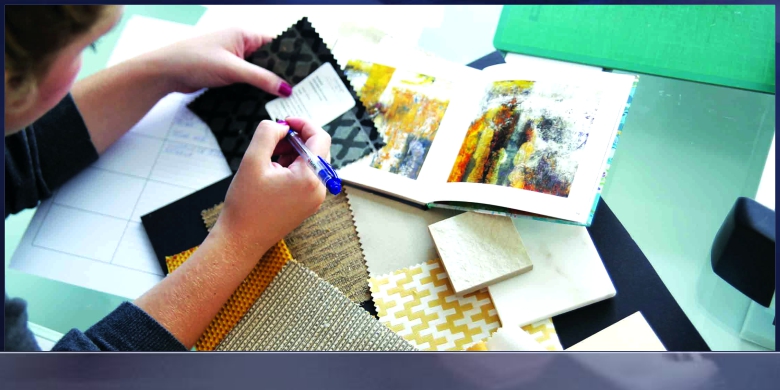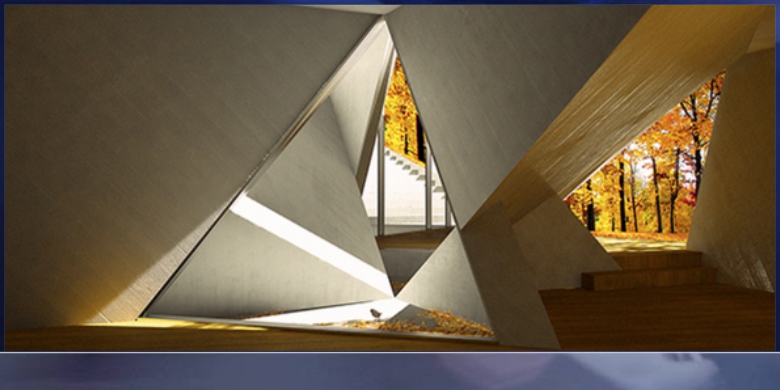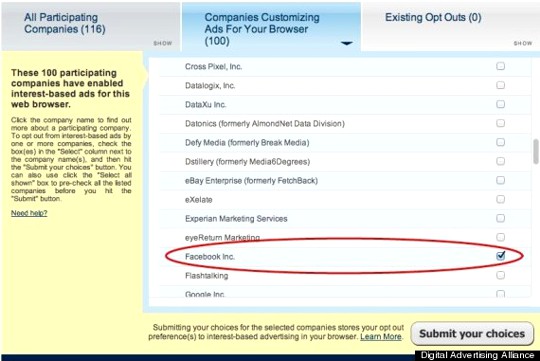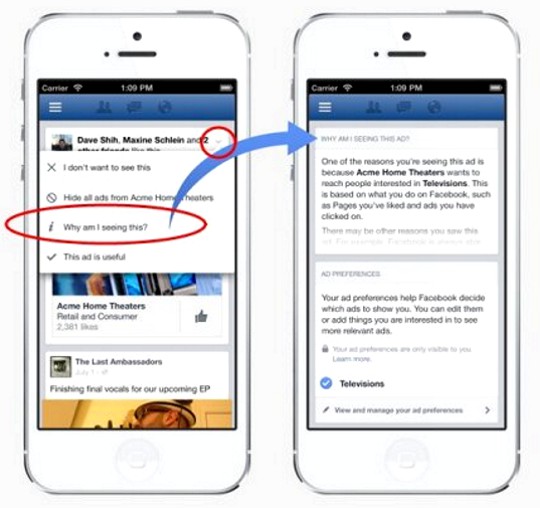Our Latest Blogs
Our Solutions News Blog was envisioned to gather and share information from the very best to help you and your business to become more effective.
Our Solutions News Blog was envisioned to gather and share information from the very best to help you and your business to become more effective.


A lot of people are confused by the many ways print is viewed compared with online media. People often think they accomplish the same things, but the reality is these two distinctive products can serve very different purposes. Here's what makes us all think the same about print.
1. Print is For Keeps... read on »
2. Print is Portable... read on »
3. Print Drives a Higher ROI... read on »
4. Print is Beautiful... read on »
5. Print Plays Well... read on »
6. Buyers Seek Print... read on »
7. Print is Credible... read on »
8. Print Puts Them In Control... read on »
9. Print is Personal... read on »
10. Print is Everywhere... read on »
Source: Xerox
Attend the HP Wall Décor course for Your AIBC or IDCEC Core Learning Unit Credit » read on

1. Interior designers do the same thing as interior architects?
A lot of people are confused by the many different job titles there are in the design industry. However, a very common mistake is to think that interior designers and interior architects do the same job. The reality is that these professions can involve many different things which are more often than not, very far apart. Generally speaking, interior design has more to do with the art of the building, while interior architecture is more concerned with the science behind it.
2. Interior design is all about décor
Interior design involves much more than just a good knowledge of décor. As we’ve mentioned in our previous article on the topic, the practice of interior architecture requires designers to consider pretty much everything to do with the building of an interior space that will affect human habitation, including materials, finishes, electrical requirements, plumbing, lighting, ventilation, ergonomics, and intelligent use of space. Interior designers with training in interior architecture will usually be present at, and have an important say during all stages of the construction process, from the initial plans right through to the finishing touches.
3. Hiring an interior designer is very costly
Depending on the scale of the project, the budget and the time frame you have in mind for finishing it, the price of hiring a professional interior designer can vary dramatically. In most cases, interior designers charge very reasonable fees and the value you get for your money will be worth paying for. If you’re not sure how much your interior design project would cost, you can simply enquire and decide if you are ready to pay for it.
4. Interior designers only work with very expensive materials
As every other professional, interior designers can work with both expensive and cheap materials and products. More importantly, they will work within the limits of the budget and requirements you give them as their client. You have to remember that the price of materials is not always crucial to getting the end result you desire. If you’re working with an experienced interior designer, they should be able to recommend you the best quality products at the most reasonable price there is.
5. You don’t need to have AN education to become an interior designer
There are many people out there that claim that they are interior designers, without having any formal education. However, as explained in some of the other points above, interior design is a very challenging and exciting profession that includes a variety of tasks and requires a great deal of skills and knowledge. The only way you can ensure that you have all these on board when applying for a job, even at an intern level, will be to obtain a formal qualification from a recognised organisation. A career in interior architecture and design can be difficult to get started and an accredited course in the subject will give you a head start by providing you the knowledge, skills, and qualifications you need to succeed.
6. Interior designers make all the decisions for you
Don’t expect that all decisions on an interior design project would be made by the designer you have hired. He or she will have a lot of recommendations on the way ideas can be implemented, but the final decisions will lie with you.
7. Interior designers can’t work with existing structures, materials and objects – they always want to throw everything old away
The truth is that interior designers always work towards achieving the goals in an interior design plan. If this plan involves the stripping of a building to its bare bones they would definitely need to throw everything old away. This is not always necessary and you can keep as much of your old stuff in your new house or space as you want.
8. “I don’t need an interior designer – I can do it on my own”
As we outlined earlier in the article, interior design is a very complex job. You can try and do some of its components on your own, but unless you have the training and understanding of interior design concepts, we think you shouldn’t start any project, small or big without a professional eye. There are so many examples of terrible design decisions that show that it is not worth risking your dream project, if you can leave it to the professionals. At the end of the day, you wouldn’t operate on somebody if you’re weren’t a doctor, right?
9. Interior designers always want to be trendy
Interior designers always strive to be aware of the new trends in their profession. However, they wouldn’t force you to do something on your project if you don’t like it or you think it doesn’t suit your needs. Trends are interesting to follow, but they are not something every interior designer tries to implement in their work.
10. Interior designers don’t need a plan for their projects
Interior designers can’t work without a plan for their project. They need to think about every single detail and plan in appropriate time for it. A good plan means that as a customer you will get an idea on the cost involved as well as the deadline for completion of each stage. Planning is a crucial part of the job of the interior designer.
11. Interior design doesn’t require a lot of time
Interior design projects can take a lot of time and this usually happens because the whole process requires the attention, skills and knowledge of the many other specialists who work with the interior designer. The designer needs to be able to speak everyone else’s language – from the plumber to the conservation officer, to be able to make the project plan work. This doesn’t mean that all interior design projects take years to complete – a complex, but very well organised job on a residential property, for example, can take around five months from start to finish.
12. Interior designers don’t need to work towards a budget
A good plan always comes with a clear idea of the budget the client has for it. There’s no such thing as “open budget” – interior designers should know what is affordable and what is not, because this can help them make some very important decisions. Give your interior designer a budget to work with and leave the magic touch to them!
Source: Id! Blog Written By: The IDI Team
We've compiled 101 Data Protection Tips to help you protect your passwords, financial information, and identity online...
Protecting Your Data
Keeping your passwords, financial, and other personal information safe and protected from outside intruders has long been a priority of businesses, but it's increasingly critical for consumers and individuals to heed data protection advice and use sound practices to keep your sensitive personal information safe and secure.
There's an abundance of information out there for consumers, families, and individuals on protecting passwords, adequately protecting desktop computers, laptops, and mobile devices from hackers, malware, and other threats, and best practices for using the Internet safely. But there's so much information that it's easy to get confused, particularly if you're not tech-savvy.
We've compiled a list of 101 simple, straightforward best practices and tips for keeping your family's personal information private and protecting your devices from threats.
Click HERE to View the entire list of 101 Data Protection Tips
Table of Contents
--------------------------------
Securing Your Devices and Networks
Data Protection Tips for Mobile Devices
Protecting Your Identity
Protecting Your Credit
Protecting Your Data on Social Networking
Protecting Your Data Online
Data Protection Following a Data Breach
Writen By: Juliana De Groot | Source: Digital Gardian

1. Interior designers do the same thing as interior architects?
A lot of people are confused by the many different job titles there are in the design industry. However, a very common mistake is to think that interior designers and interior architects do the same job. The reality is that these professions can involve many different things which are more often than not, very far apart. Generally speaking, interior design has more to do with the art of the building, while interior architecture is more concerned with the science behind it.
2. Interior design is all about décor
Interior design involves much more than just a good knowledge of décor. As we’ve mentioned in our previous article on the topic, the practice of interior architecture requires designers to consider pretty much everything to do with the building of an interior space that will affect human habitation, including materials, finishes, electrical requirements, plumbing, lighting, ventilation, ergonomics, and intelligent use of space. Interior designers with training in interior architecture will usually be present at, and have an important say during all stages of the construction process, from the initial plans right through to the finishing touches.
3. Hiring an interior designer is very costly
Depending on the scale of the project, the budget and the time frame you have in mind for finishing it, the price of hiring a professional interior designer can vary dramatically. In most cases, interior designers charge very reasonable fees and the value you get for your money will be worth paying for. If you’re not sure how much your interior design project would cost, you can simply enquire and decide if you are ready to pay for it.
4. Interior designers only work with very expensive materials
As every other professional, interior designers can work with both expensive and cheap materials and products. More importantly, they will work within the limits of the budget and requirements you give them as their client. You have to remember that the price of materials is not always crucial to getting the end result you desire. If you’re working with an experienced interior designer, they should be able to recommend you the best quality products at the most reasonable price there is.
5. You don’t need to have AN education to become an interior designer
There are many people out there that claim that they are interior designers, without having any formal education. However, as explained in some of the other points above, interior design is a very challenging and exciting profession that includes a variety of tasks and requires a great deal of skills and knowledge. The only way you can ensure that you have all these on board when applying for a job, even at an intern level, will be to obtain a formal qualification from a recognised organisation. A career in interior architecture and design can be difficult to get started and an accredited course in the subject will give you a head start by providing you the knowledge, skills, and qualifications you need to succeed.
6. Interior designers make all the decisions for you
Don’t expect that all decisions on an interior design project would be made by the designer you have hired. He or she will have a lot of recommendations on the way ideas can be implemented, but the final decisions will lie with you.
7. Interior designers can’t work with existing structures, materials and objects – they always want to throw everything old away
The truth is that interior designers always work towards achieving the goals in an interior design plan. If this plan involves the stripping of a building to its bare bones they would definitely need to throw everything old away. This is not always necessary and you can keep as much of your old stuff in your new house or space as you want.
8. “I don’t need an interior designer – I can do it on my own”
As we outlined earlier in the article, interior design is a very complex job. You can try and do some of its components on your own, but unless you have the training and understanding of interior design concepts, we think you shouldn’t start any project, small or big without a professional eye. There are so many examples of terrible design decisions that show that it is not worth risking your dream project, if you can leave it to the professionals. At the end of the day, you wouldn’t operate on somebody if you’re weren’t a doctor, right?
9. Interior designers always want to be trendy
Interior designers always strive to be aware of the new trends in their profession. However, they wouldn’t force you to do something on your project if you don’t like it or you think it doesn’t suit your needs. Trends are interesting to follow, but they are not something every interior designer tries to implement in their work.
10. Interior designers don’t need a plan for their projects
Interior designers can’t work without a plan for their project. They need to think about every single detail and plan in appropriate time for it. A good plan means that as a customer you will get an idea on the cost involved as well as the deadline for completion of each stage. Planning is a crucial part of the job of the interior designer.
11. Interior design doesn’t require a lot of time
Interior design projects can take a lot of time and this usually happens because the whole process requires the attention, skills and knowledge of the many other specialists who work with the interior designer. The designer needs to be able to speak everyone else’s language – from the plumber to the conservation officer, to be able to make the project plan work. This doesn’t mean that all interior design projects take years to complete – a complex, but very well organised job on a residential property, for example, can take around five months from start to finish.
12. Interior designers don’t need to work towards a budget
A good plan always comes with a clear idea of the budget the client has for it. There’s no such thing as “open budget” – interior designers should know what is affordable and what is not, because this can help them make some very important decisions. Give your interior designer a budget to work with and leave the magic touch to them!
Source: Id! Blog Written By: The IDI Team
So, what is interior architecture? There has been a debate raging for some time around the terms architecture, interior architecture, interior design, and interior decoration. The discussion centres on the blurring of the lines that define the role and responsibilities of each profession: where does the interior design of a space end and architecture begin, and vice versa?

So, what is interior architecture?
There have been a number of factors over the last few decades that have increased the ambiguity of these titles, including the improvement of interior design education. This has in turn increased the scope of the profession and led many interior designers to becoming more involved with architectural and technical aspects of interior design, and less with the decorative, soft furnishings side.
As a result, many interior design degree courses have been renamed as interior architecture degrees to more accurately reflect what they cover. Courses like this have also shot up in popularity, producing a growing number of architecturally savvy designers, and in turn making it more difficult to differentiate between architecture and interior design.
So what is interior architecture, and perhaps just as importantly, how does it differ from architecture, interior design and interior decoration?
Click HERE to find our more about the differing roles and responsibilities of all of these professions.
Source: Id! Blog Written By: The IDI Team
We've compiled 101 Data Protection Tips to help you protect your passwords, financial information, and identity online...
Protecting Your Data in 2017
Keeping your passwords, financial, and other personal information safe and protected from outside intruders has long been a priority of businesses, but it's increasingly critical for consumers and individuals to heed data protection advice and use sound practices to keep your sensitive personal information safe and secure.
There's an abundance of information out there for consumers, families, and individuals on protecting passwords, adequately protecting desktop computers, laptops, and mobile devices from hackers, malware, and other threats, and best practices for using the Internet safely. But there's so much information that it's easy to get confused, particularly if you're not tech-savvy.
We've compiled a list of 101 simple, straightforward best practices and tips for keeping your family's personal information private and protecting your devices from threats.
Click HERE to View Dominion Blue's Document Management Services
Click HERE to View the entire list of 101 Data Protection Tips
Table of Contents
--------------------------------
Securing Your Devices and Networks
Data Protection Tips for Mobile Devices
Protecting Your Identity
Protecting Your Credit
Protecting Your Data on Social Networking
Protecting Your Data Online
Data Protection Following a Data Breach
Source: Digital Gardian | digitalgardian.com
One of my favorite things about working remotely -- which I do a few times a month -- is the freedom to get comfortable. When I work from home, I'm usually find myself in one of three positions: sitting up at the table, laying down with my laptop, or buried in a pillow avalanche on my couch. (Sound familiar to anyone?)
While most offices have a few full-time remote workers -- and probably a few that operate like I do -- the idea of more remote employees may be one companies need to get used to.
Why is remote work becoming such a big deal? Well, from where I'm sitting (currently "sitting up at the table"), it's simple: Because good candidates are asking for it, and technology's making it an easier thing to demand -- no matter what the position entails.
For employees, this is great news. They can live where they want, spend less time and money commuting, and wear their bathrobe to meetings. But what do companies get out of it?
According to research by online freelance marketplace Upwork, sourcing and onboarding in-office employees takes an average of 43 days, compared with three days for remote employees. Not to mention, being open to remote team members widens the talent pool.
So to help you sort through the operations and expectations that employers need to consider to make remote work effective, let's walk through some practices that make it easier for me to communicate and collaborate with my remote teammates.

How to Make Remote Work Work
On Setup & Technology
I have very little in the way of tech savvy, but I do know that a good operational and technical foundation helps remote workforces stay productive. This is where two key teams come into play: Finance & Accounting and IT.
It starts with a commitment -- if you're interested in making it -- to investing in your remote team as actual employees that will grow with the company. Not contractors. Not freelancers. That investment means working with Finance & Accounting to understand the administrative costs of paying employees in different states or countries. Are there visa costs you'll need to consider? Will employees need to travel to the office on a regular basis -- and if so, is the company financing it? Do they have the technology they need at home to communicate with you effectively? Again, are you financing it if they don't?
These questions extend to IT and the infrastructure they'll need to set up, too. They'll want to build in security measures for employee devices, and will need to equip your office with the technology your in-office team needs to communicate with remote team members. This includes chat software, remote meeting software, telepresence devices, and potentially some high-tech conference rooms to make coordinating all of that seamless. One of my teammates who works remotely half the week and works with our global offices quite a bit actually takes pains to dial into meetings on video, specifically. She found it difficult at first but says it made her far more productive being visually present in meetings, and is grateful to have the infrastructure to support that.
If you start with all of this built into your budget from the get-go, two things happen: 1) you're not hit with surprise costs, and you can do a much better job with hiring planning; 2) you end up with streamlined operations for onboarding remote employees so their experience starting with your company is as good as it would be for anyone else.
On Communication
The best IT setup in the world doesn't help unless we're all using it toward the right ends. At the risk of being trite, the most successful relationships between in-office employees and their remote team members comes down to good communication from both parties. And figuring out what good communication means is kind of a beast. So bear with me while I try to break it down to its most pertinent parts for our purposes here.
Combat "face time" with over-communication.
One of the challenges remote work presents is the lack of "face time." Think about all those random one-off conversations you have in the hallway, or at the water cooler, that wouldn't be possible if you weren't in-office.
To combat this, you really need to nail the whole "regular and effective communication" thing.
Sam Mallikarjunan, who works from his home down south most of the time, found that a lot of the "random collisions" he used to have in the hallway don't happen anymore. (Obviously.) When I asked him how he makes up for it, he said "I just over-communicate. I have to proactively find opportunities to work with other people. I make a point of reaching out to people more often to tell them what I'm working on if I think it might be useful to them, and I actively talk to other people about their projects, too. There's a lot less 'the ball is in their court' mentality when I'm remote."
That proactive approach to communication is something that remote team members may start to pick up on just because they're experiencing the need for it first-hand, so it's equally important to have in-office employees reciprocate. Make it a practice in your company to systematize communication -- to me, that means in-person decisions and conversations are always formally recapped over email, in your group chat client (provided it's not in a room with only casual participation and monitoring), or for the big stuff, in a team meeting.
Use your words.
I have this theory that if street signs were properly punctuated we'd all be better writers. My favorite example is the "STOP CHILDREN" sign.
STOP THEM FROM WHAT?!
When communicating without the benefit of body language or tone, clarity with written and verbal communication is more important than ever. In an ideal world, everyone's already really good at finding the right words to say what they mean. But that's not reality, so we're left with a few options here:
1) Try to be better at it. If you're writing an email, take a beat to reread what you've written. See if you've really communicated what you're trying to say clearly and succinctly. Consider whether you've included enough context for everyone to understand what's going on. If you're having a phone or video conversation, take a moment before responding or posing a question. And if what you said makes no sense, own it and say, "Sorry I don't know what I'm trying to say, let me start over."
2) Know that reading comprehension matters. If you're on the receiving end of a communication ask clarifying questions before responding with an equally confusing answer. I try to either copy and paste the exact copy from the email, quote it, and then ask my clarification question -- or if it's a verbal conversation, repeat back what they said before asking my clarifying questions. It's important to avoid layering confusion on top of confusion.
3) Avoid reading into tone. People's tones suck sometimes. Especially over email. If a typically bubbly person didn't include a barrage of emojis or explanation points, they're probably just running late, or feeling stressed ... or something else that has nothing to do with you.
Put some alert metrics in place.
We've used the term "pothole" metrics before -- the numbers you report on regularly that, if they get out of whack, signify a deeper problem with a part of the business. I like to use that principle here as a way to be sure we're all catching everything that's going on if communication ever fails. I also like to expand that principle out to encompass the good stuff as well as the bad stuff.
These could be numbers that indicate someone's doing well or struggling -- for example, setting up traffic waterfalls if a team member's work is directly tied to hitting a traffic metric. But they can include non-numerical things, too -- like hitting project milestones for people that work in roles that are more about discrete deliverables that have changing definitions of success.
Frankly, this is a good exercise to go through for every team member -- yourself included -- whether in-office or remote. Really, it just means everyone knows what "good" looks like, and you're all able to break down "good" into its component parts so you know if you're making reasonable progress.
On Management
If managers are interested in hiring remote team members, they'll have some specific responsibilities to keep things chugging along nicely. Most of this is just about setting the right precedent for how to think about remote work for your team -- I've broken it down into the stuff you need to do proactively, and what you need to squash.
Do this:
Over-communicate the work being done by remote team members, and the value of that work. Yes, they should do this on their own. We talked about that earlier. You have to be the champion of your own career, and self-promotion is part of life ... and all that jazz. But sometimes people forget. Or they do say it, but it'd sure help if someone else reiterated it.
This becomes particularly important when someone's work output isn't very visible. For example, if your job is to write one article a day, it's pretty easy for people to see that you're doing your job. You either wrote the article or you didn't, and everyone can see it. If your role is to build operational efficiencies into backend systems that four people in the company touch ... it's really easy for that work to disappear.
Squash this:
To that end, don't let resentment or pettiness build toward remote employees -- particularly those that are part-time remote. This starts to manifest itself in little comments like: "Oh is this one of the days so-and-so is in? I can't even remember." Letting that kind of stuff slide is what makes it seem like in-office employees inherently provide more value than those that are in less often. Worse, it perpetuates the notion that face time is more valuable than work output, which I think we're all on board with as being total bunk.
Do this:
Encourage other people on your team that are in-office and have roles that allow them to work remotely ... to work remotely sometimes. That pettiness I was just talking about? It's a lot less likely to happen if working from home once in a while doesn't feel like a special privilege levied on a few special snowflakes.
Squash this:
This is where things can get tricky, too. Remote work only works when it works. Notice how I said you should only encourage remote work when people have roles that allow them to work remotely? We all know not every role makes that possible. But beyond that, not every person is always a good fit for remote work at every point in their career, either. I'll volunteer myself as an example of someone who, when starting a new role, would struggle to not be around people while I get my footing.
Or if someone is having performance issues, it may not be the right time to green light remote work. That's another reason giving feedback early, often, and candidly is important. And that rationale extends to remote employees that start having performance issues while they're already engaged in a remote work agreement with you.
Finally, always remember to do this:
We talked earlier about treating remote employees not like contractors or freelancers, but like actual full-time employees. That means they have career ambitions, and are probably interested in growth and promotion opportunities. Be sure to keep them in mind for new projects, promotions, and additional responsibility. If good people fall out of sight and out of mind, you might lose 'em.
After you've got the infrastructure set up, to me, most of this really comes down to good hiring. Get the right person, for the right role. If you've got capable people you can trust in a role, you should be able to trust that not only are they doing good work, but that they'll let you know if and when they need something different from you.
The right person can make even roles that you don't think will work in a remote scenario, work. (Unless that role is chef. Then you definitely need to be at work.
Source: Hubspot / Written By: Corey Wainwright
As organizations flatten out, employees don't have to corner senior management in an elevator to get their thoughts heard. They could just schedule a meeting, or even walk up to a leader's office or desk. So is there even a need to have an elevator pitch at the ready?
Absolutely. Although accessibility to managers has increased, the amount of time those managers have at their disposal has decreased. And that means the clearer, crisper, and more concise you can make your idea, the more likely it is that your senior-level listener will tune in.
Salespeople trying to connect with C-level prospects should have a variety of pitches at their disposal, but each should adhere to the principles of the classic elevator pitch. This infographic from Bplans explains each component of an elevator pitch to ensure you hit the highs and provide all the necessary information. Just remember that brevity is a virtue -- according to the graphic, an ideal elevator pitch should clock in at a minute or less.

Source: Hubspot / Written By: Emma Snider
There were hundreds of business books published last year. With so many books to choose from, it's nearly impossible to figure out which ones you should actually read.
We decided to simplify things for you. Similar to the way Nate Silver aggregates political polling data, BookBub aggregated 23 different "Best Books of 2014" lists -- from The New York Times to The Financial Times and more. After aggregating all the lists, we ranked the most frequently listed books, and compiled those into one big list.
The top business-related results are in the infographic below. Check it out below to learn which books made the cut.
(Note that these are just the business books. If you’re looking for the overall list, including fiction and other genres, head over to the BookBub Blog.)

Source: Hubspot / Written By: RIck Burnes

Facebook just announced yet another way it is encroaching on your privacy. Starting soon, the company said on Thursday, it will use information gathered from other websites to figure out the ads that best apply to you.
But, to its credit, Facebook is also offering a way to opt out of its new data-gathering system. Here's how to do so in just two steps.
Step 1:
Go to this page from the Digital Advertising Alliance, a consortium of advertising trade groups. There you'll find a list of all the companies that track your browsing to deliver tailored ads. Mostly likely, Facebook is among them.
Find "Facebook Inc." under "Companies Customizing Ads For Your Browser" and check off the checkmark to the right.

Then just hit "Submit."
One important note: Disabling Facebook from tracking on one web browser does not disable it on all browsers. You'll have to go through this step on all browsers you use to check your Facebook account, even those on the same computer.
Step 2:
Unless you have an ad blocker, you'll never get Facebook to completely stop using all of the knowledge it has compiled on you. But you can pick and choose some of the things that get thrown into the pile. Over the next several weeks, Facebook will roll out a new tool in the U.S. that will let you add or subtract interests, like "Television" or "Electronics," that Facebook has attributed to you.
When this feature is made available, you'll be able to access it by clicking or tapping the gray arrow in the top-right corner of the ad and then going to "Why am I seeing this?" From there, you'll be able to edit your list of interests.

Again: This second step will not be available for a few more weeks. And if none of this is good enough, there's always the nuclear option of (gulp) deleting your Facebook.
Source: Huff Post
 |
|
 |
|
 |
|
 |
|